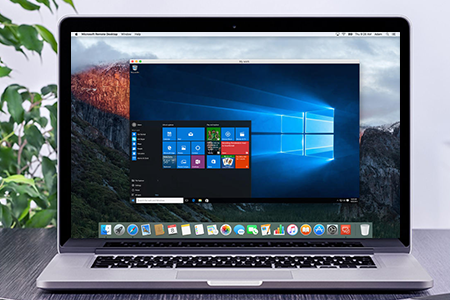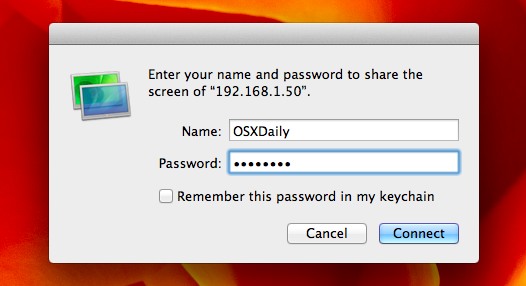

- #MAC OS X REMOTE DESKTOP CLIENT SOFTWARE#
- #MAC OS X REMOTE DESKTOP CLIENT OFFLINE#
- #MAC OS X REMOTE DESKTOP CLIENT DOWNLOAD#
If you spend a day capturing downloads you'll get the hang of it.
#MAC OS X REMOTE DESKTOP CLIENT DOWNLOAD#
Which location they go to depends on OS version and whether the download is a 3rd party, Apple App, Apple system file or some other classification. Only Root has access to some of these locations so you have to login as root to capture the installers. Library/Updates/numbered folder beginning with zzzz031 or just 031 which may vary by OS version/ private/var/folders/zz/zyxvpxvq6csfxvn_n0000000000000/C/PKInstallSandboxManager/5AF5AE82-B23B…(numerical string which may or may not be unique).activeSandbox/Root/Applications/ There are newer locations of downloads which include: Things have changed with each OS version since this article. X11 is much faster and more efficient than VNC for remote access to GUI apps, and once you get it down the first time, it'll be second nature, even to connect two Macs.There are several online articles on capturing app store installers from the app store.
#MAC OS X REMOTE DESKTOP CLIENT OFFLINE#
But if you're offline for too long, your session will expire and you'll get kicked back to your Mac's shell prompt. When you're offline for periods of a few minutes, your SSH tunnel will be held open for you and reconnected as soon as your LAN interface comes back up. Is useful, too, and Firefox runs nicely on X11. If your remote machine has the GNOME desktop environment installed (it doesn't need to be running), try this in your ssh session: Everything compiled against GNOME and KDE is intrinsically X Window-enabled. Once the X11 apps are in your PATH, you can go snooping around. You may need to specify the path to your remote system's stash of X11 clients. Now, whenever you run an X11-enabled app in that ssh session, the application runs on the remote machine and automatically opens its windows on your Mac.

The answer should come back "localhost:10.0" unless the remote machine has been configured differently. When ssh -X connects, it will ask for a password, just as regular ssh does. You have to be able to access that machine via ssh, of course, which requires that you set up sshd (the SSH daemon) on the remote box and exchange credentials. When run from inside xterm on your Mac, this command creates a tunnel from the remote machine to your X server. Fortunately, some creative melding of X11 and SSH, the secure shell, gave us this gem: Reaching across LAN segments, or through NATs and firewalls, was no picnic without resorting to VPN. The toughest thing about X11 used to be arranging for X11 clients to see your server. They reach out to your server to tap your display, keyboard and mouse, but with far lower networking and compute overhead than full-screen remote desktop sessions require. X11 applications on remote hosts are clients. The X11.app that you run on your Mac is the server.
#MAC OS X REMOTE DESKTOP CLIENT SOFTWARE#
In X11 parlance, the X11 server is the software that handles communications and renders client content. Now we get to the most important step, which, once you understand the whole X11 client/server thing, is a walk in the park.

In my previous two posts on the subject, I explained why you'd want to use X11 to drive a host remotely, and the basics of configuring your Mac to run OS X's X11 server and to use local X11 software.


 0 kommentar(er)
0 kommentar(er)
